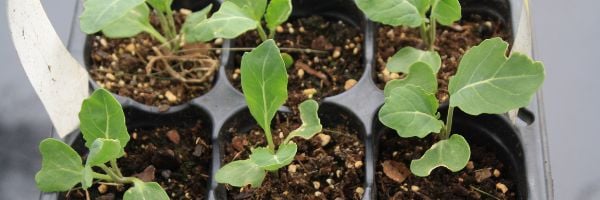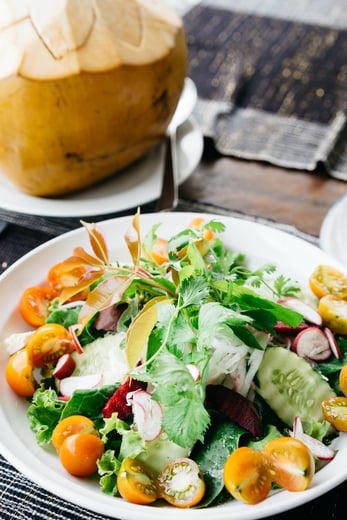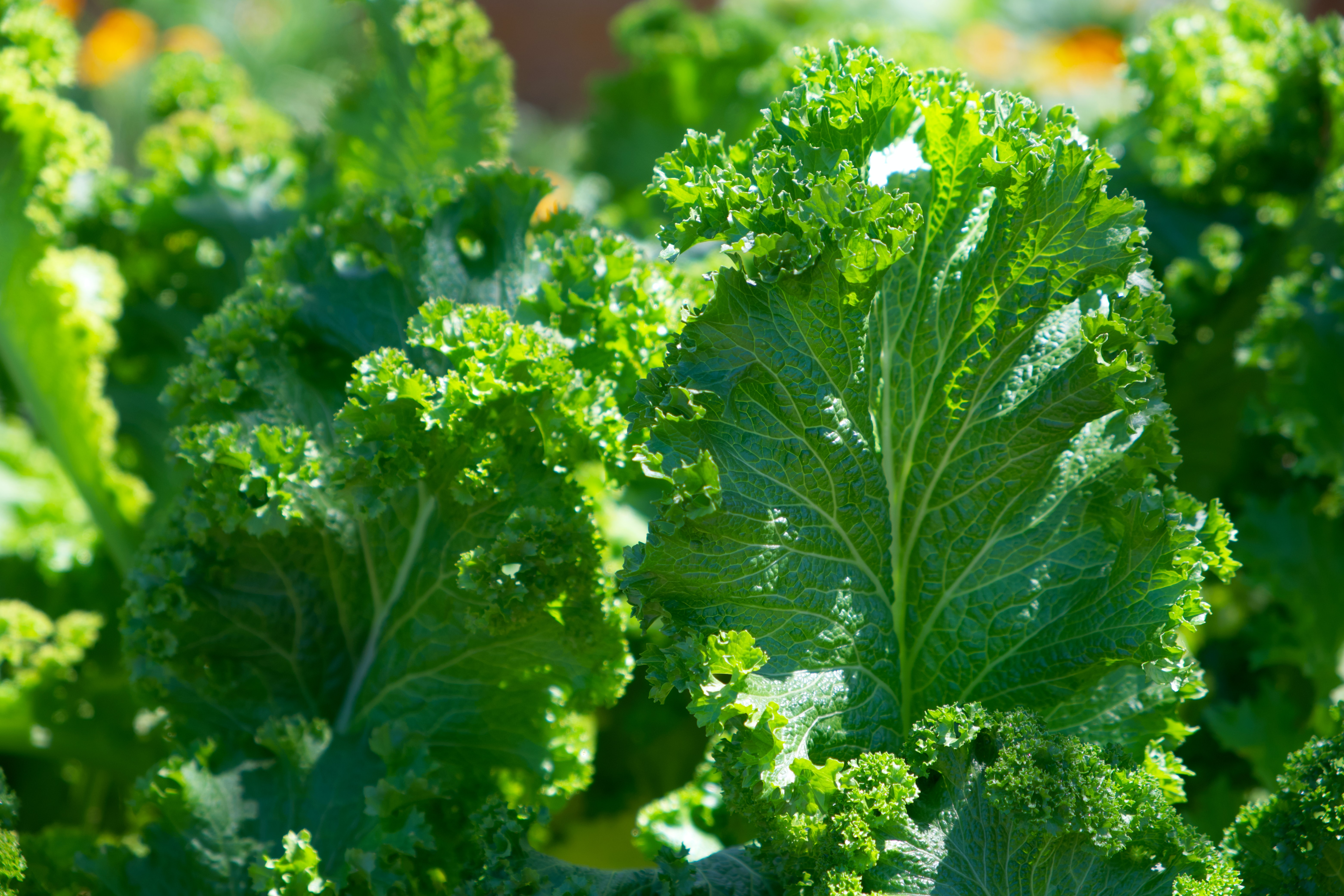
Fresh, just-picked vegetables have incredible flavour and are an easy encouragement to get more fresh produce into your diet. Once you’ve tasted a sweet and juicy tomato that you have grown yourself, you’ll want to more often toss them in a salad. The great part is that you’ll be able to cut down a little bit on the monthly grocery bill.
While most of us won’t be able to grow enough to be self-sustaining, there are tons of health benefits from adding fresh organic produce to your diet. Get the kids involved, and it will help them to eat more veggies too. It’s incredible to see a plant go from seedling to producing fruit or vegetables. All the hard work put into it makes the result that much sweeter. And it won’t be tough to get the kids on board with a fun gardening project. They will love sampling the produce that they have so diligently cared for.
benefits from adding fresh organic produce to your diet. Get the kids involved, and it will help them to eat more veggies too. It’s incredible to see a plant go from seedling to producing fruit or vegetables. All the hard work put into it makes the result that much sweeter. And it won’t be tough to get the kids on board with a fun gardening project. They will love sampling the produce that they have so diligently cared for.
The Beginner Basics
It all seems incredibly daunting to go from a patch of bare and empty soil to a lovely veggie producing garden. Still, some simple starter setup tips will help any budding green thumb go from beginner to veggie growing expert in no time.
Start Small
Many beginners make the mistake of planting too much all at once. And who can blame them for their excitement! But it’s best to start small to manage the overwhelm so that you can enjoy yourself and learn how to grow veggies well. You don’t want your crop to feel burdensome and become neglected.
If you only have pots or planting boxes:
- Start with a 1m X 1m planting box
- Pick 1 to 3 plants and purchase 2 to 3 seedlings of each.
- Herbs, chillies, tomatoes, bean runners, and leafy greens are great starter options.
If you have a large garden:
- Start with a max size of 3m X 3m.
- Pick 3 to 5 plants and purchase 3 to 5 seedlings of each type.
Companion plants work together in small blocks
Get your head around potential plant pests by planting important companion plants with your vegetable seedlings. Certain plants balance nutrients in the soil, fend off predators, suppress weeds, attract pollinators, and deter pests. Planting these together with your selected veggies will make sure that you will create a system that takes care of itself and helps improve the success of your crops.
With a simple search on the internet, you can find the perfect companion plants for the crops you’d like to grow. Flowers to add to the mix may be lavender, marigolds, zinnias, and sunflowers, which ward off pests and attract beneficial insects. Herbs can also do the heavy lifting when it comes to pest control. Consider plating chives, mint, rosemary, oregano, coriander, and basil in the mix of your veg.
Even if you have a bigger plot to plant in and tons of space to play around with, it helps to think of your planting plan in smaller meter-by-meter squares. So even if you ramp up the size of your planting significantly, you can be sure that the perfect companion plants and suitable pest control are built into your garden structure from the start!
Finding the best spot
Successful gardening is dependent on choosing the appropriate spot for the plants you’d like to see flourish. The wrong location can affect the development of fresh produce, so you want to make sure that you consider everything to get your plants to grow some tasty veggies.
You’ll need to read the package instructions for seeds or seedlings, but here are a few essential things to think about before digging your first hole:
Water and RainWater is essential, of course, but not too much. Too much rain and poor draining can cause root rot, so set up some good drainage by raising the plant beds or creating raised rows in your garden.
Sun
Energy from the sun will get your plants going, and almost all plants need about 6 to 8 hours of direct sunlight each day. Make sure to plan your plant placement strategically to maximize the time they get to soak up all that sunshine.
Soil
Plants draw most of their nutrients from the soil so it’s critical to choose nutrient-dense products to help boost the success of your new crops. Well-prepped soil is the basis for great gardening. Make sure to loosen up the soil to at least 30 cm deep so the roots can reach down deep. You can also add organic matter like compost and mulch in the beginning. Then, keep topping this up every month.
WindStrong wind can wreak havoc on seedlings and young plants by bending them, so it’s best to find an area away from any direct winds. Pollinators like bees are affected by the wind too. Allow them to pollinate to their heart’s content by situating your plants away from the gales. Once you’ve found the perfect spot for your plants, it’s time to consider what to plant.

Choosing Your Crop
- Plant for your family’s needs
A great tip is to start with veggies that everyone loves. If nobody likes beetroot, then don’t plant beetroots. But if the kids love carrots, then go wild! Starting small is an excellent option because you can slowly incorporate your veggies into your weekly meals. Don’t start with too many different plants, or you’ll be spread thin trying to take care of them all. And most importantly, you want to plant so that you can eat all the great veggies you produce and not waste them. If you produce too much, you can always give them away to friends and family.
Consider the Seasons
When planting anything, preparation is important. And prepping for seasonal changes is the biggest concern. Wanting to go away for the school holidays? Well, you’ll need to prepare in advance and if you have plants that require a lot of care, you’ll need to organize someone to look after them while you’re away otherwise, they may suffer. You don’t want all your hard work to be for nothing, so it’s essential to choose plants that will fit with your yearly rhythms and lifestyle. Choose the best for your family by checking the plant’s care instructions and harvesting season. A great rule of thumb: plants that harvest in summer require more maintenance and cool-season crops are lower maintenance.
Consider what’s available
Not interested in growing boring old lettuce that you can get from your local grocery store? Maybe you want to try your hand at something a little more exciting, like a range of chillies, rare herbs, or Asian salad greens. Go for it! There are no hard and fast rules, and you might have fun producing something that you can’t find at the grocer. Another great cost-saving option is to plant a variety of herbs for cooking. These are easy to start with and far cheaper when homegrown.
Don’t overcomplicate it
When you’re starting, it’s important not to take on too much or choose plants that require special maintenance. Start with some beginner-friendly favourites that will help you fall in love with veggie gardening and help you learn the basics without all the fuss or technical knowledge. Here are the eight easiest options to get started with:
- - Cherry Tomatoes
- - Spinach and Chard
- - Lettuce
- - Baby Marrows
- - Sweet Peas
- - Carrots
- - Peppers
- - Green Beans
Still, feel a little intimidated to try your hand at growing veggies? Not to worry, build confidence with our herb growing beginners guide before you graduate to veg.